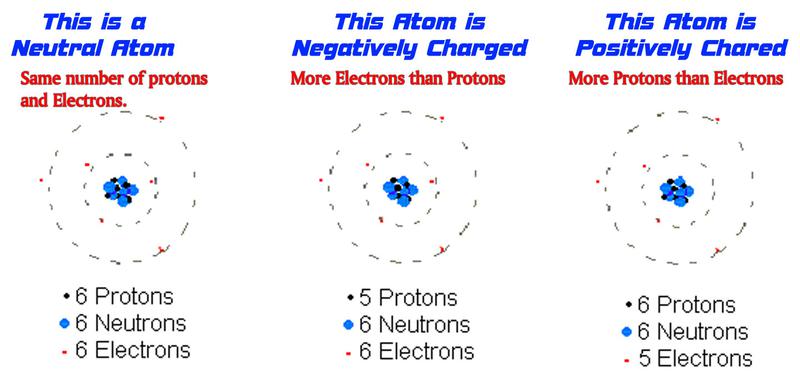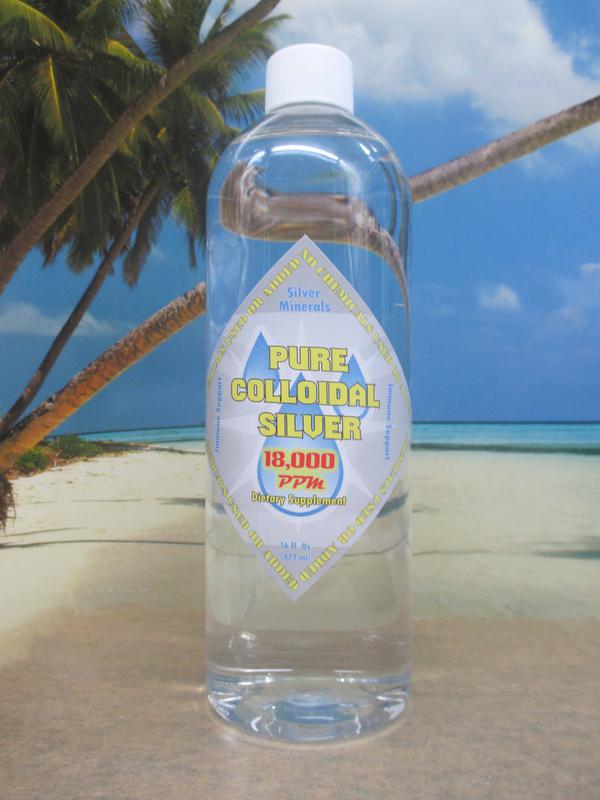These products and statements have not been evaluated by the United States Food and Drug Administration and are not approved to diagnose, treat, cure or prevent disease. The information provided on this site is for informational purposes only and is not intended as a substitute for advice from your physician or other health care professional. You should not use the information on this site for diagnosis or treatment of any health problem or to prescribe medication for a treatment. You should always consult with a healthcare professional before starting any diet or supplementation program. Product availability, pricing, and promotions are subject to change without notice.
Topics Discussed: The chemicals in ionic silver
When Others Say...... "It Cannot Be Made,"
It Just Means, that... They Do Not Know How!
GoldenGevity High PPM Products
Open weekdays 9 AM- 4 PM 619-752-6777
Ionic Products vs. Atomic Particle Colloidal Products.
Physics tells us that IONS are made from ATOMS and are considered to be electrically neutral if they have the exact amount of both protons and electrons.
When external factors force atoms to have either a shortage or a surplus of electrons they’re called atomic ions or “Ions” for short.
Ions are created from thermal, electrical, radiation and chemical formulation.
Polarity is revealed with ions as they exhibit either a positive (+) or a negative (-) electrical charge. Those having a positive charge are called cations (+) and ions with a negative charge are called anions (-).
Even if ionic silver is toxic to bacteria, if it cannot penetrate the bacteria its effectiveness is minimal at best. Because IONS are very unstable, and attract to each other due to differences in polarity and create huge clusters, some larger than nanoparticles and can never effectively penetrate a virus.
This would be comparable to trying to throw a soccer ball through a basketball. The soccer ball being three quarters the size of a basketball itself is not going to be able to penetrate it. Instead, it will bounce off and cause only minor damage to the basketball if anything. Nanoparticles of silver quickly cling to other particles and form Molecular Ionic clusters. These would be similar to the soccer balls in this comparison.
The formation of these molecular sized, ionic silver, particle groups creates a problem.
Bacteria of Staphylococcus Aureus averages between ½ and 1 micrometer in size. A molecular ionic silver particle that’s between 50 and several hundred micrometers in size is not going to penetrate bacteria that small. Ultrasmall bacteria average between 320 nanometers long by 240 nanometers wide. Colloidal silver nanoparticles are often as large as 200 nm in size.
Particles that are ⅔ the size of the bacteria itself also will not be able to penetrate it.
The reason ionic particles of silver give just bare, minimal results is because of the way they work. They smash bacteria, viruses and similar pathogens with particles that bruise, cut and mildly shock these microorganisms while only killing off small numbers of them. The microorganisms retaliate from this assault by excreting various toxins to protect themselves.
In the image you can see the repulsive, ugly looking chemical compound, yet many producers still claim they don’t use or have chemicals in their products, but have a "Silver Protein" or "Mild Silver Protein" which may be soap phosphate by products.
Our products are not Ionic based Colloidal Silver solutions:
Monatomic ions, those ions with a single atom, start of being just an atom.
To be transformed into an ion, an external influence forces an atom to lose or
gain a significant number of electrons. Once this occurs, the atom becomes
an ion. A catalyst is necessary to produce ions. The catalytic factors that
make ions are: Thermal, Electrical, Radiation and Chemical Impacts on the
atoms.
When chemical methods are used to make Ions and Nanoparticles in a
solution, it causes a distinctive color change. The colors can vary
considerably depending on what chemicals were used.
Positive and negative ions exhibit magnetic particle attraction qualities that
are very similar to what is seen with magnetic fields. Either of these ions are
attracted to oppositely charged ions that have a different polarity and amount
of electrons.
This process also occurs in nature with thunderstorms and being nearby waterfalls. Ions are also produced by thermal, electrical, radiation and chemical processes. When chemical processes are used to make metallic ionic solutions, they attract larger particles that blend in with the chemical compounds. These compounds in solutions are unsuitable for human consumption.
High PPM of Silver ions (which are not the same as negative Ions in the air), can only be produced via a chemical process.
Silver ions are made with bromides and or phosphates; they usually have a strong brown color, and when shaken you have a foamy substance that is slimy when tasted.
Chemical consumption is the #1 reason for the reported negative side effects. Checking for chemical content makes sense to prevent side effects; by purchasing a chemical free product, you have very little if anything to be concerned about.
Ions can be found in three different types:
Monatomic ions, which are composed of a single atom, Polyatomic ions, which are made up of multiple ions and finally Molecular ions which are larger sized ions made from many monatomic and polyatomic ions being clustered together.
Molecular ions present a serious concern in relation to colloidal silver solutions.
- Pharmaceuticals are adding Silver to their antibiotics due to antibiotic resistant mutating viruses and bacteria, finally they admit that silver works!
- United Kingdom Studies determine that silver kills cancer cells better than Chemotherapy!
- University of Nuevo Leon Mexico Studies conclude that AG Kills HIV-1 info ?
- 2005 Studies prove that AG stops HIV Virus from attaching to its host cell
- Atomic Particles how they compare in size to Ionic and Nanoparticle Colloidal Products
- Pure Colloidal Atomic Particles: Why they outperform nano products and why they are non toxic.
- Avoiding Chemically Made Colloidal Products How to Immediately Identify them!
- Proof Colloidal Silver was prescribed prior to 1939
- Blue Man - Blue People Hoax
- Dosage Facts - Atomic Particles RDA is better than for nanoparticles
- What are Pure Antioxidants and how to get them?
Pure Means PURE!
It Clearly states: NO Chemicals Used or Added!
Not made with Cyanides
Not made with Nitrates
Not made with Fluorides
Not made with Chlorides (salts)
Not made with Toluene
Not made with Nitric Acid
Not made with Hydrochloric Acid
Not made with Hydrogen Peroxides
Not made with Mercury Compounds
Not made with Bromides or Phosphates
Not made with Chloroform (Embalming Fluid) some companies with patents use this chemical.
Only Silver and Distilled Water.
Nanoparticle sized bacteria obviously has a much softer shell than a basketball does. So when silver nanoparticles impact against these bacteria, they may cause minor lacerations, bruising and micro electrical shocks. The shocks occur because silver is the most electrically conductive element.
Think of a fully charged 12 volt battery connected with a pair of battery cables. If you ground the cables together touching one clamp to another, it releases a spark discharge. A similar situation occurs when a colloidal silver particle with a positive charge comes in contact with viruses, bacteria or other pathogens having a negative charge. Magnetic particle attraction ensues drawing these oppositely charged particles together. Upon contact with a harmful microorganism, they discharge one or more electrons causing an electrical shock of sorts.
Now the interesting part: Nanoparticles of colloidal silver seldom remain as separate individual particles in a solution of water. Since they’re unable to attach to the molecules of water, they immediately begin attaching themselves to each other in rapid, sequential steps. First, most of the unstable monatomic ions attract other individual ions and quickly transform into polyatomic ions that are composed of multiple monatomic Ions.
Magnetic particle attraction increases once the polyatomic ions have formed. Masses of polyatomic ions keep attracting quantities of nanoparticles which quickly transform into huge molecular sized ionic clusters.
Nanoparticles of silver that were 8 to 200 billionths of a meter in size grew a thousand fold and became micro-particle groups that are between 8 and 200 millionths of a meter in size, which is a thousand times larger.



